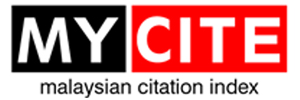TO LEAVE OR TO LIVE: UNDERSTANDING THE LIVED EXPERIENCES OF THE OUT OF SCHOOL YOUTHS VICTIMS OF THE TYPHOON HAIJAN IN CAPUTATAN NORTE, MEDELLIN, CEBU
DOI:
https://doi.org/10.31674/mjmr.2018.v02i03.007Abstract
The purpose of this research was to explore the lived experiences of the out of school youths (OSY) victims of the Typhoon Haijan in Caputatan Norte, Medellin, Cebu. A qualitative methodology using a phenomenology framework was employed, with semi-structured interview to facilitate the respondents reveal their lived experience. A convenience sample of five OSY’s who have direct experience of typhoon Haijan was needed to reach saturation. Data analysis was based on Colaizzi’s methodology. The whole process was based on the data, transcribed interviews, sorting, categorizations (cool analysis), categories as thematized (warm analysis) in a repertory grid or a dendogram that paved the way to discovering the value of the lived experiences of the out-of-school-youths victims of typhoon Haijan. The description of the lived experience revealed is the terrifying experience that emanate from the OSY internal and external environment of retreating, revealing, and regressing experience, the destructive experience that derives from the OSY’s understanding of detrimental, desuetude, and destitute observations, and the surviving experience that stems from exodus, endure, and empower experience. The themes, which emerged, suggest that the lived experience reflected a normal adaptation response of human beings siege with disasters.
Keywords:
School Youths, Victims, Phenomenology framework, Typhoon Haijan, Emotional traumaDownloads
References
Acosta, A. & de Guzman, A. (2017). A panorama of conflict mediation experiences of a selected group of administrators representing the Philippine School Overseas. International Journal of Educational Policy Research and Review, 4 (7), pp 158-168
Aguilera, D.(1997). Crisis Intervention: Theory and Methodology. 8th Edition, Mosby, USA.
Allender, J., Rector, C. & Warner, K. (2010). Community Health Nursing: Promoting & Protecting the Public’s Health, 7th Edition, Lippincott Williams & Wilkins, USA.
Caelli, K. (2001). Engaging with Phenomenology: It is more of a challenge than it needs to be? Quality Health research, 11(2), pp 273-281.
Center for Law and Social Policy (CLASp). (2012). Out- Of-School-Male-Colors. Retrievedfrom:https:// www. clasp. org/ sites/ default/ f i les/ public/ resourcesandpublications/files/RWJF-Roundtable- Summary-OSY.pdf
Creswell, J.W. (1998). Qualitative Inquiry and Research Design : Choosing among Five Traditions. Sage Publication, USA.
Daniels, R, Grendell, R. & Wilkins, F. (2008). Nursing Fundamentals: Caring & Clinical Decision Making. Australia: 2nd Edition, Cengage Learning, USA.
Frank, D. & Sullivan, L. (2008). The Lived Experience of Nurses Providing Care to Victims of the 2005 Hurricanes. Southern Online Journal of Nursing Research, 8(3), pp1-11.
Gearing, R. (2004). Bracketing in Research: A Typology. Quality Health Research, 14(10), pp 1429-1452.
King, T.A. & Tarrant, R.C.A. (2013). Children’s knowledge, cognitions and emotions surrounding natural disasters: An investigation of year 5 students, Wellington, New Zealand. Australasian Journal of Disaster and Trauma Studies,1, pp17-25.
Knox, S. & Burkard, A. (2009). Qualitative research interviews. Psychotherapy research : 19, pp 566- 575.
Kruger, D. (1988). An introduction to phenomenological psychology. 2nd Edition. Juta, South Africa.
Kvale, S. (2006). Dominance through interviews and dialogues. Qualitative Inquiry, 12(3), pp 480-500.
Lawler J. (2011). Children’s Vulnerability to Climate Change and Disaster Impacts in East Asia and the Pacific. Published by: UNICEF East Asia and Pacific Regional Office. Retrieved from: https:// www.unicef.org/medi/file/Climate_Change_Regional_Report_14_Nov_final.pdf
Lewis, S. (2015). Qualitative Inquiry and Research Design: Choosing Among Five Approaches. Health Promotion Practice, 16(4), pp473 – 475.
Masten, A.S. & Obradovic, J. (2007). Disaster preparation and recovery: lessons from research on resilience in human development. Ecology and Society 13(1), pages 9
McWilliam, C., Kothair, A., Ward-Griffin, C., Forbes, D., Leipert, B. (2009). Evolving the theory and praxis of knowledge translation through social interaction: A social phenomenological study. Implementation Science, 4(2), pp 1-14.
Mechanic, D. & Tanner, J. (2007). Vulnerable people, groups and populations: Societal View. Health Affairs, 26(5), pp 1220-1230.
Oxford Dictionary. (2015). Oxford Dictionary Press. Retrieved from: http://www.oxforddictionaries. com/ us/definition/american_english/empower on May 4, 2015.
Patton, M. (1990). Qualitative evaluation and research methods. Sage Publications Inc, USA.
Philippine Risk Reduction Management Coordinating Council Report. (2014). Assessment of Disaster Risk Reduction and Management (DRRM) at the Local Level. Retrieved from: https:// www.coa.gov.ph / p h o c a d o w n l o a d p a p / u s e r u p l o a d / D R R M / Assessment_of_DRRM_at_the_Local_Level.pdf .
Shi, L. & Stevens, G.D. (2005). Vulnerability and unmet health care needs. The influence of multiple risk factors. Journal of General Internal Medicine, 20(2), pp148-154.
Shosha, G.A. (2012). Employment of Collaizzi’s Strategy in Descriptive Phenomenology: A Reflection of a Researcher. Retrieved from: https://eujournal. org/ index.php/esj/article/viewFile/ 588/657.
Published
How to Cite
Issue
Section
License
Copyright (c) 2017 Malaysian Journal of Medical Research (MJMR)

This work is licensed under a Creative Commons Attribution-NonCommercial-NoDerivatives 4.0 International License.























